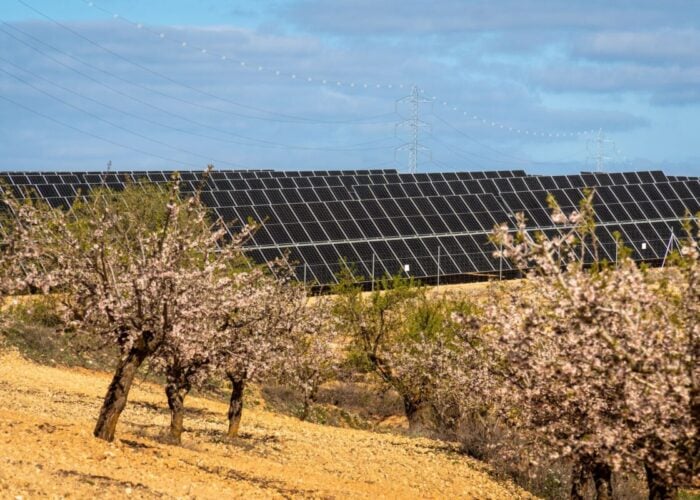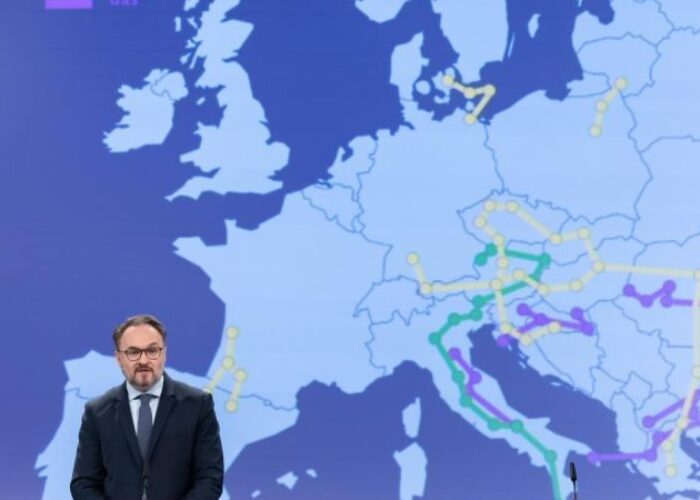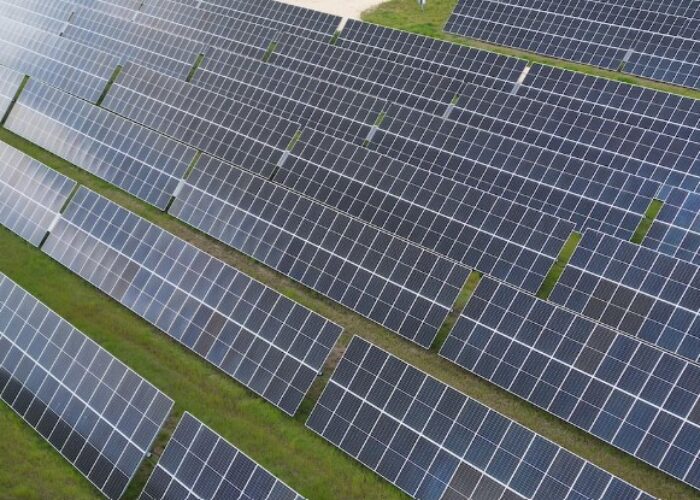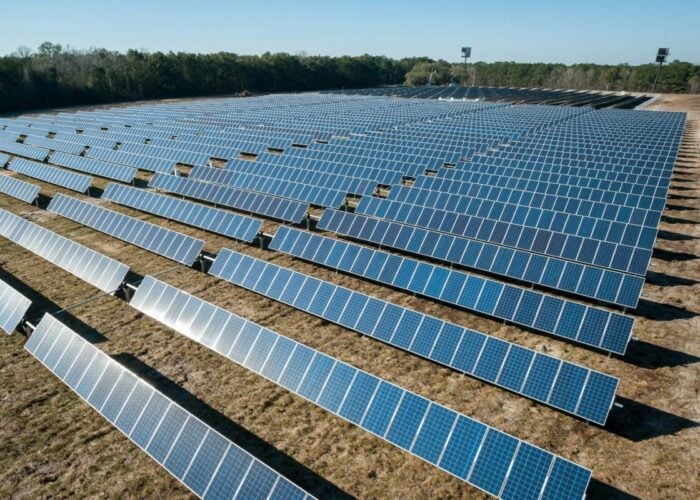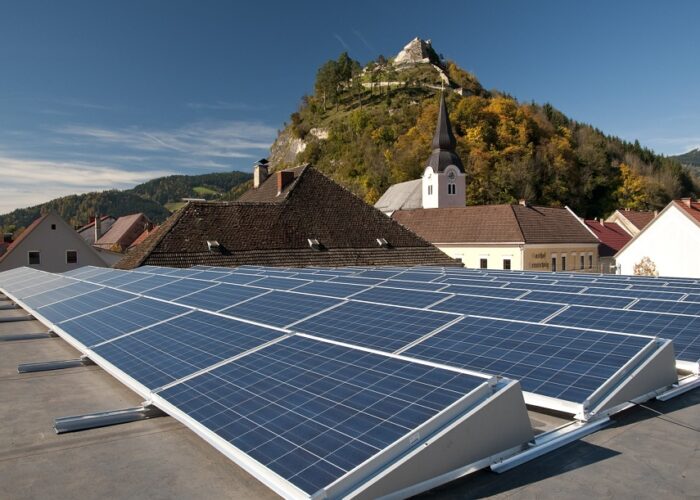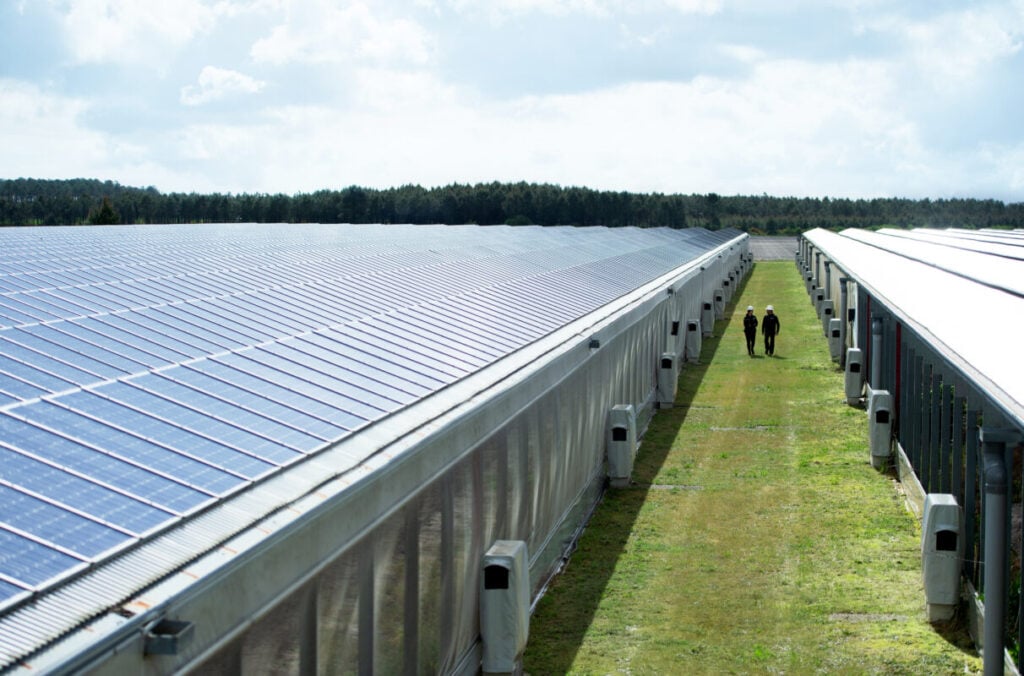
The increasing sophistication of inverters means they have a role in everything from cybersecurity to home energy management. So why are producers of these vital pieces of hardware having such a challenging time? Will Norman investigates.
Around this time last year, PV Tech Power was writing about the situation facing Europe’s solar module manufacturers—one of falling prices, job losses, oversupply and financial results that made for unhappy reading as the sector fought for air under the overwhelming weight of Chinese products.
Try Premium for just $1
- Full premium access for the first month at only $1
- Converts to an annual rate after 30 days unless cancelled
- Cancel anytime during the trial period
Premium Benefits
- Expert industry analysis and interviews
- Digital access to PV Tech Power journal
- Exclusive event discounts
Or get the full Premium subscription right away
Or continue reading this article for free
Though the situation for inverter producers in Europe—and the West more generally—isn’t repeating history directly, it’s certainly rhyming. Major European players such as SMA Solar and Fronius, Israel’s SolarEdge and the US microinverter producer Enphase Energy have all cut jobs, lost lots of money and announced “strategic changes” in different forms over the last nine months. Inverter prices have fallen and, according to data from sun.store – a European solar product distribution platform – China’s Huawei and Sungrow are dominating the European market.
What happened and what are Western inverter producers doing about it?
After a boom…
In 2024, Western inverter producers began issuing concerning announcements; SolarEdge began the year with a 16% workforce cut – around 900 employees – and later in the year its then-CEO, Zvi Lando, stepped down to aid the company’s “full recovery”. Enphase Energy also announced 500 job cuts and the abandonment of a manufacturing contract in Mexico, citing difficult dynamics in Europe but also the US where inflation was stalling the residential PV market. Both companies showed dramatically depressed financial results and shipments compared with 2023.
In November, perhaps the biggest announcement came: Germany’s SMA Solar – formerly the global market leader in inverter production – would be cutting 1,100 jobs in restructuring efforts that followed a significant decline in revenues from its residential and C&I business.
The outbreak of war in Ukraine in 2022 triggered an energy crisis across much of the world. Europe felt the brunt of the price shockwaves and it scrambled to deploy renewable energy – largely solar PV – to control prices and reduce reliance on Russian gas. Coinciding with the imperative to grow the economy after the coronavirus pandemic, European countries introduced a number of incentives for solar PV additions, especially in the residential sector. Moreover, high energy prices pushed consumers to install solar to insulate themselves from whichever shock would come next; data from Germany’s Solar Industry Association (BSW) said that in 2022 residential solar installations there rose by over 40% and that, perhaps as tellingly, three-quarters of homeowners would consider installing PV and one in five were planning to do so within 12 months.
This was good news for inverter producers. Suddenly, relatively simple solar inverter products that just had to manage the output between a solar array and a home, with a little interaction with the grid, were in huge demand. “The two factors [the energy crisis and the pandemic] created a huge demand in Europe and the rest of the world,” says Christian Carraro, general manager for Europe at SolarEdge.
“This coincided with a shortage in the semiconductor market and the industry [starting to] grow capacity,” he says.
This bubble would burst. “At the end of 2023 and over 2024 there has been a combination of economic and political factors which have slowed [the market] down a bit and attened the growth of the solar industry,” Carraro says.
Europe’s inverter demand quickly receded—a trend that also happened across other markets. Power prices stabilised after the energy crisis and interest rates rose, making solar systems less attractive to consumers.
Carraro says that the mood of consumers subsequently moved from a sense of emergency “to a more natural sense of evaluation” as inflation and interest rates rose and government efforts to stabilise energy prices began to work. Political change across Europe – particularly in Germany and France with an ascendant right wing broadly less favourable to renewable energy – “created uncertainty for investors” in 2024 and pulled the brakes yet more firmly on rapid solar expansion.
This has led us to late 2024 and early 2025 when the financials of inverter producers have been laid bare and Western companies have had to reevaluate their positions.
The hangover
In an interview last year, Cormac Gilligan, associate director of clean energy technology at S&P Global, told us that the drop-off in demand led to oversupply in the market after distributors had over-ordered – and ordered speculatively – during the boom period of 2022/23.
In comments for this article, Gilligan tells PV Tech Power that there is still excess inventory in Europe in 2025: “There remains higher than normal inventory in Europe in Q1’25, especially in the channel (i.e., with distributors and/or installers) for residential and small commercial-scale installations.
“This has challenged inverter suppliers… shipping inverters to distributors as [the distributors] still have sufficient stock.”
Gilligan continues to say that some distributors or manufacturers “may be re-shipping product” from low demand to high-demand markets, provided they meet the certification requirements of the end market. Having lots of inventory waiting around in European warehouses is not good for companies looking to recover their momentum and plough new furrows.
On an optimistic note, responding to questions for this article, CEO of SMA Solar, Jurgen Reinert, tells us: “We are now seeing the first signs of relief and expect the oversupply among manufacturers to continue to decrease in the coming months.”
‘Becoming a software company’
While the broad economic and political winds were buffeting Western inverter manufacturers, the requirements for their products were shifting too. Two dynamics have broadly affected this: a need for more sophisticated products and inverters that are more “commoditised”.
After the solar expansion of 2022-23, where rooftop solar expanded dramatically (SolarPower Europe even estimated that 49.5% of the global PV additions in 2022 were on rooftops), many governments in wealthy countries shifted their focus from incentives for solar PV to encouraging energy storage systems and dynamic power pricing.
This has called for more complex inverters that can manage not just solar and residential energy storage but, increasingly, a whole home system, which could include an electric vehicle charger, a battery or the whole heating and power system for a household. Dries Acke, deputy CEO at SolarPower Europe, says that inverters have become the “brains of the power system” both at a residential and larger scale.
The relationship between digital and variable renewable energy assets and the grid has also changed. Incentives repaying consumers for excess solar capacity sold back to the grid have begun to be replaced with dynamic tariffs and repayment schemes, which account for energy storage and encourage self consumption. This made the most high-profile headlines in California through changes to its net energy metering (NEM) 3.0 scheme, which rewards consumers for using their own stored power at peak times.
Crucially, these products need to be able to “interface with the grid at a much higher level than just feeding the grid”, Carraro says. “This means moving more from being a hardware company to being a software company.”
S&P’s Cormac Gilligan says that inverters that handle a whole property – Home Energy Management Systems (HEMS) – are increasingly common in 2025.
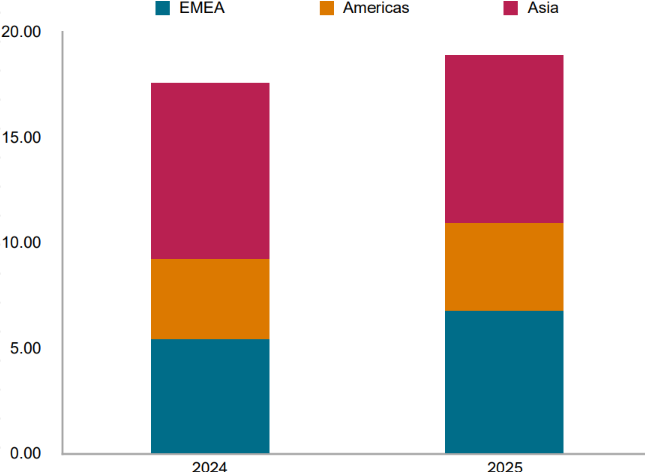
“Residential solar is facing increasing challenges when it comes to exporting electricity to the grid,” Gilligan says. “With feed-in tariff reductions, limits on self-export and dynamic tariffs creating a more complex environment, effective software solutions are becoming essential for managing residential solar systems.
“Numerous leading suppliers are pushing this capability along with their hybrid inverter and battery, EV and heat pump partners to open up new customer opportunities.”
Andy Newbold, director of communications at Enphase says: “The shift from solar only to solar and battery is a unique challenge.” Rather than the technology itself, he says that the challenge is in the increased price of battery attachments and the subsequent cooling e ect that has had on the market, in conjunction with a worsened macroeconomic situation. He also says that it’s an “education thing. We need to explain to people why they need a battery; you have installers who are learning to sell batteries and explain that value proposition.”
All of the companies we spoke to are producing and developing products with precisely these HEMS functions: “Our SolarEdge One platform [is designed to] increase the return on investment…by managing dynamic tariffs, integrating heat pumps, integrating EV chargers. I would say that’s the future,” Carraro says.
SMA Solar’s Jurgen Reinert, also tells PV Tech Power: “In residential and small commercial sectors, the focus is on smart networking and energy management to maximise self-consumption and e ciency. Our portfolio includes efficient PV and battery inverters, integrated systems, energy management solutions, and EV charging technology.”
Enphase, too, has launched offerings to increase compatibility with battery storage and develop more complex grid interfacing. Leading Chinese players also offer hybrid inverter solutions.
Commoditisation
In November, Gilligan said the inverter market had become more “commoditised”; oversupply and expanding capacity have made products cheaper and, broadly, harder to distinguish from one another. This is ultimately to the benefit of Chinese producers, which can grow and push for an economy of scale much more easily than their Western counterparts.
Following the oversupply situation and Europe’s excess inventory, when Chinese products entered the market significantly, Gilligan says that “Chinese inverter exports to Europe were lower in 2024 in revenue terms by over 40%Y-o-Y according to S&P Global.” However, Sungrow and Huawei currently lead the European inverter market by volume, supplemented by other, lesser-known Chinese firms.
“Especially on the lower level [of the market], the offerings are all the same,” Carraro says. “Basically, the average of the market is going down and everyone’s offering the same thing at the same price.”
Enphase’s Andy Newbold is more dismissive of the commoditisation conversation.
“We’ve been hearing this conversation about the commoditisation of inverters for a long time,” he says, “and if you sit there and ask ‘what’s the cheapest product I can buy?’…there are a lot of companies that are going to beat us on that front.”
For Newbold, Enphase is selling on value, service and quality more than price. He asks: “You can buy a really cheap product, but is it going to give you the value that you want and desire over time?”
He repeats a phrase that comes up a handful of times in our conversation – “we’re [an] incredibly financially healthy company” – which he frames as part of Enphase’s inherent value.
Enphase’s revenue declined by almost US$1 billion between 2023 and 2024. SMA Solar’s sales fell by almost 20% year-onyear and net losses increased by over US$300 million, while SolarEdge also saw income fall by over US$1 billion. The financial health of each company could, fairly, be questioned.
All of the companies we spoke to say they expect to return to profitability and a stable market situation in the near future. We have already seen job cuts and restructuring measures, and ultimately the proof of the pudding – as to whether the Western inverter market sees a major financial recovery – will be in the eating.
Keeping inverter supply safe
Concurrently with the market challenges, there has been concern over Chinese companies’ growing dominance in the inverter market, particularly in Europe.
At the height of the 2022-23 boom, when demand soared amid the energy crisis, Western manufacturers – particularly in Europe – did not have the capacity to meet that demand.
According to SolarPower Europe’s Dries Acke, Chinese products filled that gap and have expanded their dominance since.
In November, SolarPower Europe convened a meeting at SMA Solar’s headquarters in Niestatal, Germany
at which it called on the European Commission to intervene to support the continent’s inverter producers in the face of growing Chinese dominance of the sector and challenging market conditions. The trade body said the sector “faces difficulties due to global manufacturing overcapacity and a slowdown in the rooftop PV segment in several important European markets”.
Perhaps it is not immediately obvious that this should call for official intervention. After all, as Acke acknowledges, “We are dependent on market dynamics for the energy transition; it’s important that there’s competition.”
However, Acke says that there is “something special” about inverters that goes beyond free market competition and into the realm of strategic importance. “[Inverters] are really the brains of the solar [PV] system, and, by extension, the brains of the entire electrified energy system.”
There are arguments made about resilient manufacturing bases for a number of energy technologies – not least solar modules – but the relative complexity and sophistication of inverters make them the “most strategic” option, Acke says. As discussed above, inverters are only going to get more complex and more digitalised in the coming years.
“Inverters are really the place where [Europe] hits geopolitical security issues if you’re not careful,” he continues, “and where we still have a European manufacturing base that is worth investing [in] and maintaining – for more reasons than just resilience and supply chains, but for cybersecurity and energy security reasons. We see this as the strategic industry par excellence for Europe.”
Cybersecurity is an increasing concern as digitalised, electrified power systems expand. Digital inverters can be tracked and controlled from remote servers in locations miles away from the inverters themselves; in theory, if a bad actor were to enter the system – or a hostile state government had influence over a company – they could disrupt or switch off digital inverters without warning.
Parts of the inverter industry – particularly in Europe – are concerned about the security risk that over-reliance on particularly Chinese products poses.
SMA Solar’s Jürgen Reinert says: “Inverters play a central role in the stability and security of our electricity grids. Because electricity is not stored directly, its generation must be precisely matched to consumption at all times. Even small disturbances or fluctuations can lead to widespread blackouts – as in 2006, when the failure of a single transmission line caused a chain reaction that affected 10 million homes in Europe. Inverters have a direct impact on this balance, especially when a high proportion of renewable energy is used.”
He continues: “In this context, the increasing dependence on individual manufacturers, especially Chinese manufacturers, is indeed critical. Around 80% of the inverters used in Europe now come from China. The technical possibility of centrally controlling or even simultaneously switching off such devices poses real risks to grid stability and thus to energy security.”
There have been concerns about the security of Chinese tech in other sectors, notably Huawei’s involvement in telecommunications infrastructure. Within the sector, Lithuanian MPs voted last November to limit the ability of “hostile countries” to remotely access digital power assets – effectively meaning greater security regulation of Chinese inverter companies and products.
Both Carraro and Newbold stress the importance of cybersecurity at their companies. Carraro says it is “difficult to evaluate the size of the danger…it’s dependent on us to make solar energy a safe asset”. He also claims that SolarEdge is “trying to be as safe as possible” and “not everybody has that same focus”.
Earlier, we compared the inverter manufacturing space to the solar module production space 12-18 months ago. Dries Acke says that in the security aspect, there is a key difference: “We often hear that we shouldn’t change a dependency on Russian gas for a dependency on Chinese solar panels – there’s no comparison, it’s not the same thing.”
He explains that dependence on gas is a “flow dependency”, where if the flow stops, things stop working. If the flow of solar panels stops, there is a scrabble for new products, but, basically, the lights stay on.
“With inverters…the risk is different. They could switch something off. There’s always a link with the OEM (original equipment manufacturer),” Acke says.
This, as well as the waning health of the European industry, pushed SolarPower Europe to call for intervention.
Acke says that inverters lend themselves to the “Buy European” incentives the EU has laid out in its Net Zero Industry Act (NZIA), namely the “resilience” criteria which mean that “by 2026, likely all public procurement…needs to source products which do not come from the dominant source of supply. Inverters are a good option [for that criteria], because there is already supply [in Europe].”
Beyond this, SPE is calling for inverters to be designated an Important Project of Common European Interest (IPCEI); a scheme dedicating investment to strategic sectors which offer a “significant contribution to economic growth, jobs, the green and digital transition and competitiveness”. Acke says there is an IPCEI for microelectronics and battery production and says that, though inverters “may seem small…it’s just really important for the whole electrified energy system.”

